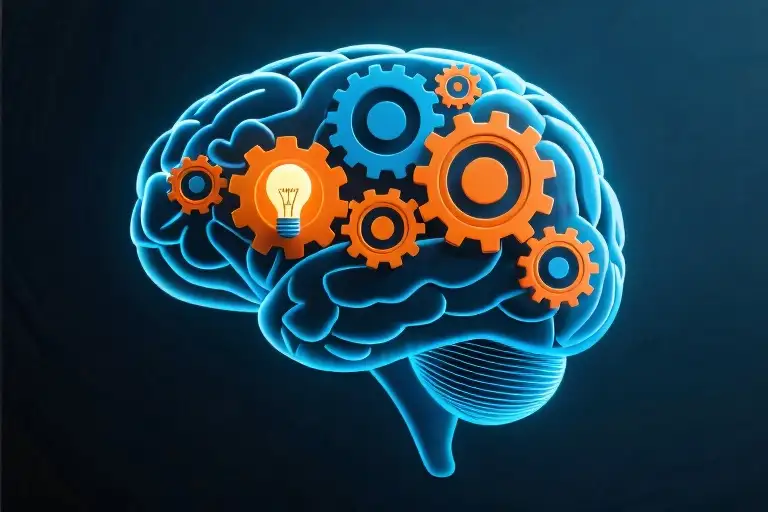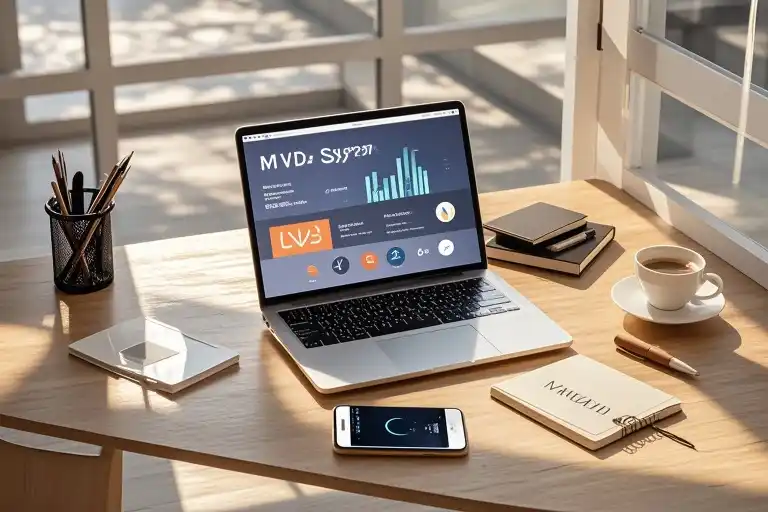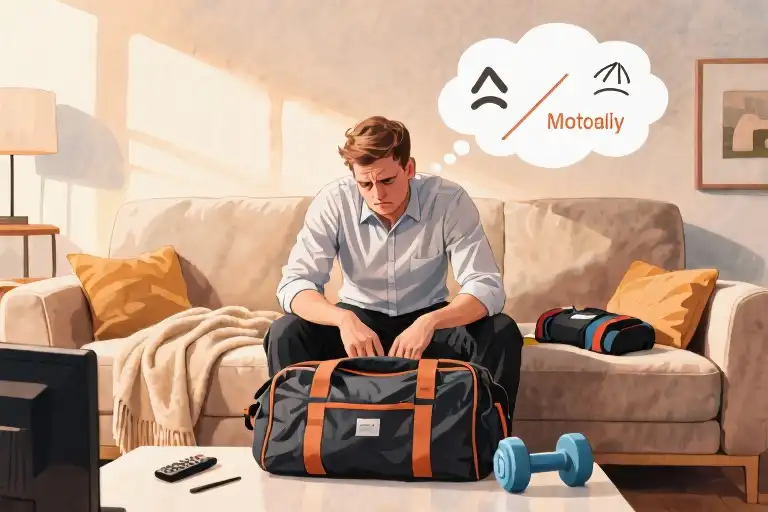The story sounds almost too strange to be true: Benjamin Franklin, one of America’s founding fathers, once turned a political rival into an admirer simply by asking to borrow a book. Not by flattery, not by persuasion—just by making one carefully calculated request.
This peculiar phenomenon—now known as the Benjamin Franklin effect—reveals a counterintuitive truth about human psychology. Sometimes the fastest way to make someone like you isn’t to give them something, but to ask them for a small favor. Their brain does the rest.
Over the next few minutes, we’ll unpack three similarly unexpected mental shortcuts that can help you:
- Transform reluctant acquaintances into allies (using that same 18th-century trick)
- Silence decision fatigue with a 10-second rule and a coin toss
- See through your own excuses by rewriting them in brutally honest terms
These aren’t theoretical concepts—they’re field-tested tools for anyone who’s ever wasted hours overthinking simple choices, struggled with procrastination disguised as exhaustion, or wished they could reset a strained relationship. The best part? Each requires less effort than you’re probably expending right now to resist checking your phone.
Let’s start with the most socially surprising hack—the one that worked so well it’s named after a man who helped invent a nation.
Hack #1: Make Anyone Like You (By Asking for Help)
Here’s something that sounds completely backwards: Want someone to like you? Ask them for a favor. Not a grand gesture, not flattery—just a simple, almost insignificant request. This isn’t some modern hack; it’s a principle Benjamin Franklin used centuries ago to turn an enemy into a friend.
The Book That Changed Everything
Franklin had a rival in the Pennsylvania legislature—someone who’d publicly disapproved of him. Instead of trying to win him over with compliments (which would’ve felt insincere), Franklin did something unexpected: He asked to borrow a rare book from the man’s personal library. The favor was small, easy to fulfill, and non-threatening. The rival agreed.
Here’s the twist: After lending the book, the man’s attitude toward Franklin shifted. They eventually became friends. Why? Because our brains are wired to justify our actions. When we do something nice for someone, even a small thing, we unconsciously think, “I must like this person, otherwise why would I help them?” It’s called cognitive dissonance—the mental discomfort that comes from holding two conflicting thoughts. To reduce that discomfort, we adjust our feelings to match our actions.
The 3-Step Favor Formula
- Identify the Right Person: This works best with someone who’s neutral or mildly negative toward you—not someone who actively despises you (that’s a different psychology challenge).
- Make It Small and Specific: Ask for something that requires minimal effort but feels personal. Examples:
- “Could I borrow your notes from last week’s meeting?”
- “You’re great at [skill]. Would you mind giving me one quick tip?”
- Express Gratitude—Then Step Back: A simple “Thanks, this really helped” reinforces the positive association. Don’t overdo it; let the psychology do the work.
Where This Goes Wrong
- Asking for Too Much Too Soon: Requesting a huge favor (like a loan or a career favor) can backfire, creating resentment instead of goodwill.
- Being Transactional: If you immediately ask for another favor, it feels manipulative. Space them out.
- Choosing the Wrong Favor: Avoid requests that inconvenience the person (e.g., “Can you drive me to the airport at 5 AM?”). The key is low effort, high perceived value.
Why This Works in Real Life
- Workplace: Strained with a colleague? Ask for their input on a project. They’ll subconsciously see you as more collaborative.
- Dating: Instead of trying to impress a date, ask them to recommend a book or podcast. They’ll associate you with the pleasure of being helpful.
- Networking: People remember (and like) those they’ve helped more than those who’ve helped them.
Pro Tip: Combine this with reverse psychology for double impact. For example, “I’d ask for your advice, but you’re probably too busy…” often triggers a “No, I’d love to help!” response.
The Science Behind It
A 1969 study (Journal of Personality and Social Psychology) found that participants who were paid less to complete a boring task rated it as more enjoyable than those paid more. Why? Their brains justified the effort (“I did this for almost no money—I must have liked it”). The same applies to favors: Small acts of kindness rewire perception.
Try This Today: Pick one person you’d like to improve relations with and request a minor favor. Notice how their tone shifts afterward. (And if you’re skeptical? Well, there’s only one way to find out…)
Hack #2: Decide in 10 Seconds or Less
Your brain wasn’t designed for modern decision overload. Every day, you make about 35,000 choices – from what to eat for breakfast to which email deserves your attention first. This constant mental juggling act drains your willpower reserves by noon. But here’s the liberating truth: most decisions don’t deserve your brain’s prime real estate.
The Neuroscience Behind Decision Fatigue
When researchers at Princeton tracked judges’ parole decisions, they discovered a bizarre pattern: approval rates dropped from 65% to near zero as the day progressed. This wasn’t about the cases – it was about depleted mental energy. Your prefrontal cortex (the brain’s CEO) consumes glucose faster than any other region. Like a phone battery, it drains with every swipe left or right.
This explains why you:
- Stare blankly at Netflix for 20 minutes
- Regret impulsive 3 AM online purchases
- Can’t choose between salad or fries after work
The 10-Second Solution
Rule: If the outcome won’t impact your life in one year, give yourself exactly 10 seconds to decide. Set a mental timer (or literally count down) and commit. This works for:
- Reply-or-delete email triage
- Outfit selection (unless it’s a job interview)
- Small purchases under $50
Pro Tip: Keep a list of “10-Second Approved” default choices (e.g. “When tired → green tea, not coffee”). Your future self will thank you.
When to Flip a Coin (Seriously)
For higher-stakes decisions where you’re paralyzed:
- Assign options to heads/tails
- Flip – but watch your gut reaction when the result appears
- Relief? Go with the coin
- Disappointment? Choose the opposite
This works because coins don’t decide for you – they reveal what you secretly wanted all along. Try it with:
- Job offers (“Heads: Startup, Tails: Corporate”)
- Relationship dilemmas
- Big purchases (the dread you feel when it lands on “buy” tells all)
Real-World Decision Hacks
For Work:
- Implement a “3-Email Max” rule before scheduling meetings
- Use the “5-Minute Miracle”: If a task takes <5 minutes, do it immediately
For Life:
- Meal prep? Pick 3 go-to recipes and rotate (no more “What’s for dinner?” drama)
- Social plans: Say yes or no within one breath – maybe’s are mental vampires
Remember: Indecision is a decision to stay stuck. Your brain will protest at first – it loves overanalyzing. But with practice, you’ll reclaim hours of mental bandwidth for what truly matters.
Next: How to spot when your brain is lying to you about being “too tired” (Hint: It’s probably just bored).
Hack #3: The Lie You Tell Yourself
The Excuse Reconstruction Experiment
We’ve all been there—that moment when you catch yourself saying “I’m too tired to work out” or “I don’t have time to network”. Here’s the uncomfortable truth: 90% of excuses are just polished lies we tell ourselves. Try this immediate mindset shift:
- Identify your go-to excuse (e.g., “I’m overwhelmed to start this project”)
- Replace it with: “This isn’t important enough for me right now”
- Observe the visceral reaction (That gut punch? That’s your brain calling your bluff)
Example:
- Old excuse: “I can’t learn Spanish—my schedule’s packed!”
- Truth bomb: “Learning Spanish isn’t a big enough priority for me to reshuffle my schedule.”
This isn’t about guilt-tripping—it’s about exposing the hidden cost-benefit analysis your brain already made. As Stanford’s 2018 Motivation Science journal found, people who verbalized their true priorities showed 34% faster goal achievement.
The Death Perspective (And Why It Liberates You)
When anxiety hits about that awkward email or failed presentation, employ the 5-5-5 Rule:
- Will this matter in 5 days? (Probably)
- Will it matter in 5 months? (Maybe)
- Will it matter in 5 years? (Almost never)
Practical application:
- Pre-meeting nerves: “Will my corpse care about this PowerPoint typo?”
- Social media envy: “Is anyone’s deathbed regret ‘I wish I’d posted more selfies’?”
This isn’t nihilism—it’s selective pressure relief. A 2022 Journal of Behavioral Therapy study showed participants using mortality awareness reduced procrastination by 41%.
Boredom vs. Fatigue: Your Body’s Deception
That 3pm energy crash? Your physiology might be lying. Here’s how to diagnose the real issue:
| Boredom Symptoms | True Fatigue Signs |
|---|---|
| Mental fog but physical restlessness | Heavy eyelids, muscle weakness |
| Craving stimulation (snacks/scrolls) | Craving sleep above all |
| Energy returns with novel tasks | Energy stays low despite activity changes |
Quick fix: If you’re bored, switch to a physically passive but mentally engaging task (e.g., audiobook + walking). Your brain isn’t tired—it’s starving for novelty.
Action Steps
- Excuse audit: Keep an “excuse log” for 3 days, then convert each to a priority statement
- 5-5-5 notepad: When stressed, physically write where the issue falls on the timeline
- Boredom test: Next time you feel “tired”, try a completely different activity type before quitting
“The first step to getting unstuck is admitting you’re not actually glued down.”
Time to Take Action
You’ve just armed yourself with three psychological superpowers:
- The ability to turn skeptics into allies (thanks, Ben Franklin)
- A decision-making system faster than your overthinking
- X-ray vision to see through your own excuses
Here’s your mission:
Download Your Decision Flowchart
We’ve created a printable cheat sheet that condenses everything into:
- When to use the 10-second rule vs coin flip
- Scripts for effective favor requests
- The “bored or tired” diagnostic checklist
(Pro tip: Tape it to your fridge or make it your phone wallpaper)
A Message From Your Future Corpse
That presentation you’re stressing about? The awkward encounter you’re replaying? They’ll be as relevant as your middle school lunch menu when you’re six feet under.
“Your future self won’t regret the things you did – only the things you didn’t do because you were too busy worrying.”
Your Turn to Experiment
These hacks only work if you:
- Try at least one TODAY (start small – ask a colleague for a pen)
- Notice what backfires (every psychology trick has exceptions)
Tweet us @MindHacks: Which counterintuitive tip surprised you most? Screenshot your flowchart in action – we’ll feature the best stories!
Final reminder: That thing you’re putting off? It probably matters less than your brain claims. Now go do something that would make your 90-year-old self proud.





